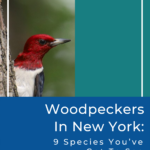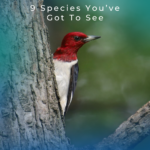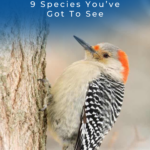When we say New York, a picture of skyscrapers, busy streets, and flashing billboards in the middle of the Big Apple is what usually comes to mind. But did you know that the state is home to over 400 species of birds?
New York’s green spaces, forests, dunes, parks, and more make it a great place for birdwatching, and woodpeckers are among the many captivating bird species that can be seen and heard in the Empire State.
With their chisel-like beaks and long tongues, these colorful birds spend their day pecking trees and capturing insects. Let’s get to know the nine woodpeckers in New York!
Yellow-Bellied Sapsucker
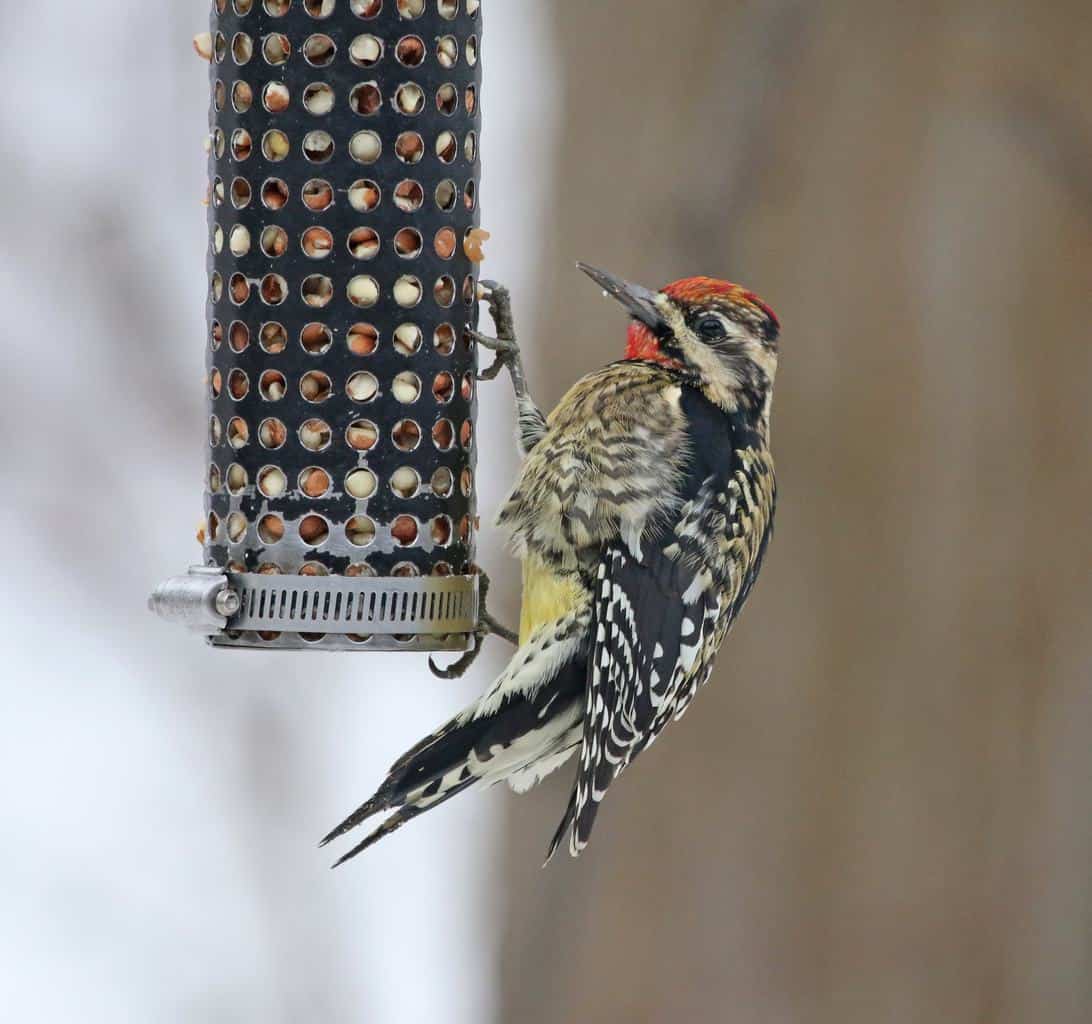
- Scientific Name: Sphyrapicus varius
- Length: 7.1-8.7 inches
- Weight: 1.5-1.9 ounces
- Wingspan: 13.4-15.8 inches
The yellow-bellied sapsucker is marked by a black and white pattern on its face and red forehead. Males of this species are flecked with even more crimson, with red feathers trickling down their necks.
These sapsuckers live in deciduous and coniferous forests at high elevations and dig two kinds of holes in trees — round deep holes and rectangular shallower holes — to dig out the sap to eat.
To locate a yellow-bellied sapsucker, just keep an eye out for the sap wells; you’ll find the holes either in line with older holes or in new lines.
The characteristic mewing calls of sapsuckers can help you identify them as well. Just follow the “wee-wee-wee”!
Pileated Woodpecker

- Scientific Name: Dryocopus pileatus
- Length: 15.8-19.3 inches
- Weight: 8.8-12.3 ounces
- Wingspan: 26.0-29.5 inches
Meet our pal the pileated woodpecker. This large bird is effortlessly identifiable by the white stripes running down its neck and the prominent red plume on its head. That crimson cluster of feathers is also where the bird gets its unique name, as pileatus means “capped” in Latin.
Pileated woodpeckers generally reside in areas with an abundance of woodland and especially prefer to live in forests with lots of dead trees. They peck on trees to find insects, and the holes they dig can often be deep enough to cut a small tree in half.
If you listen closely, you can hear their loud drumming and whining calls in the distance.
Red-Headed Woodpecker
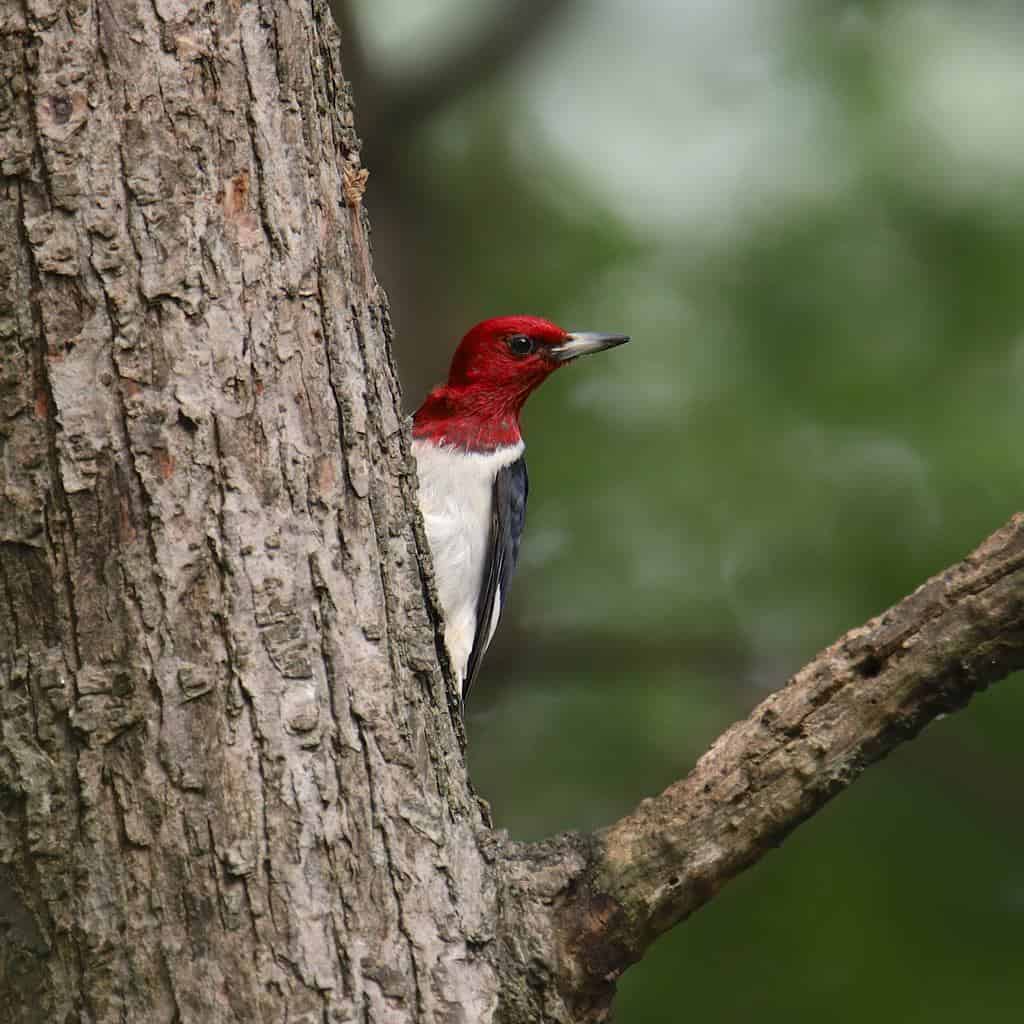
- Scientific Name: Melanerpes erythrocephalus
- Length: 7.5-9.1 inches
- Weight: 2.0-3.2 ounces
- Wingspan: 16.5 inches
The entirely crimson head and neck of the red-headed woodpecker bird allow this bird to make a striking first impression. And with its white body and bold black and white wings, it has undoubtedly earned the nickname “flying checkerboard.”
As far as habitat is concerned, red-headed woodpeckers favor deciduous woodlands with oak or breech. You can find them in parks, swamps, and on roadsides, too.
In addition to pecking insects from inside trees, red-headed woodpeckers are excellent flycatchers, and they adeptly swoop out to catch a flying insect as soon as they spot it. Additionally, this species is known for storing food for later, wedging insects, nuts, and berries into crevices so tight nothing can escape.
Red-Bellied Woodpecker
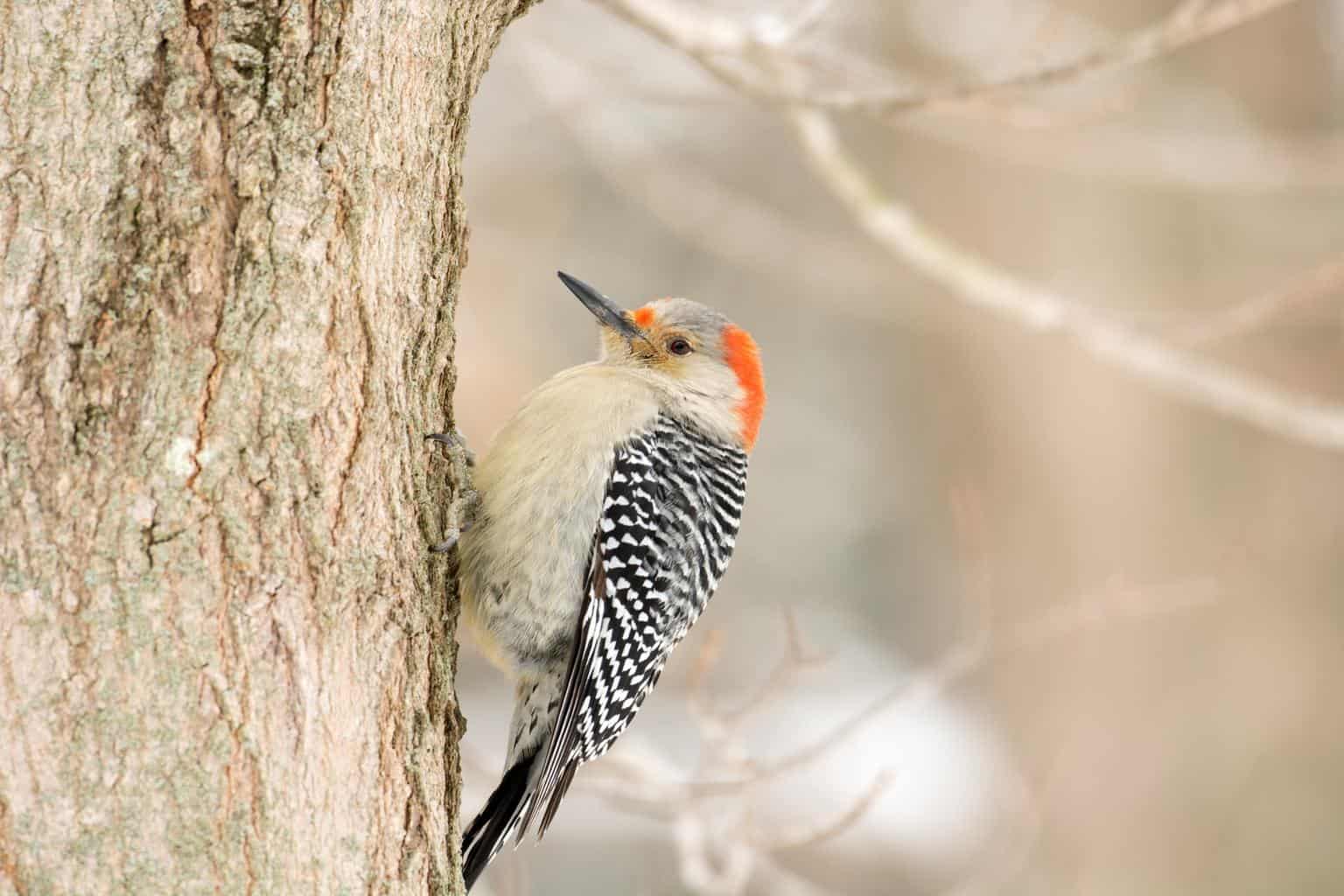
- Scientific Name: Melanerpes carolinus
- Length: 9-10.51 inches
- Weight: 2.0-3.2 ounces
- Wingspan: 13.0-16.5 inches
Despite the implications of its name, perhaps the medium-sized red-bellied woodpecker’s most striking feature is not the tints of red on its stomach area but instead the bright red cap it wears with the black and white patterns on its wings.
Red-bellied woodpeckers live in most wooded areas of eastern United States, and most New Yorkers know and recognize them easily, as they are common year-round residents in the majority of the state.
Even if you don’t immediately see this bird, you’ll likely hear it right away. These noisy woodpeckers make loud and unique churr sounds. You can hear their frequent calls during the spring. Have you heard them yet?
These birds catch their food by pecking into trunks of dead or decaying trees to look for insects, and when they can’t find a small creature to feast on, they’ll make a meal of in-season fruit or nuts.
Downy Woodpecker

- Scientific Name: Dryobates pubescens
- Length: 5.5-6.7 inches
- Weight: 0.7-1.0 ounces
- Wingspan: 9.8-11.8 inches
Downy woodpeckers commonly nest in open woodlands, parks, and even walls of buildings. They feed on insects from tree barks, as well as plant material. Unlike larger woodpeckers, these small birds can reach tiny critters, including beetle larvae, inside small wood branches.
This little woodpecker, with its black and white checkered body and vividly striped head, can be found year-round in New York, and if you’re lucky, you might find a couple of these wood boring birds spending some time at your backyard feeders.
If you couldn’t recognize downy woodpeckers’ high-pitched pik sounds, which we highly doubt, you’ll identify their loud drumming.
Hairy Woodpecker
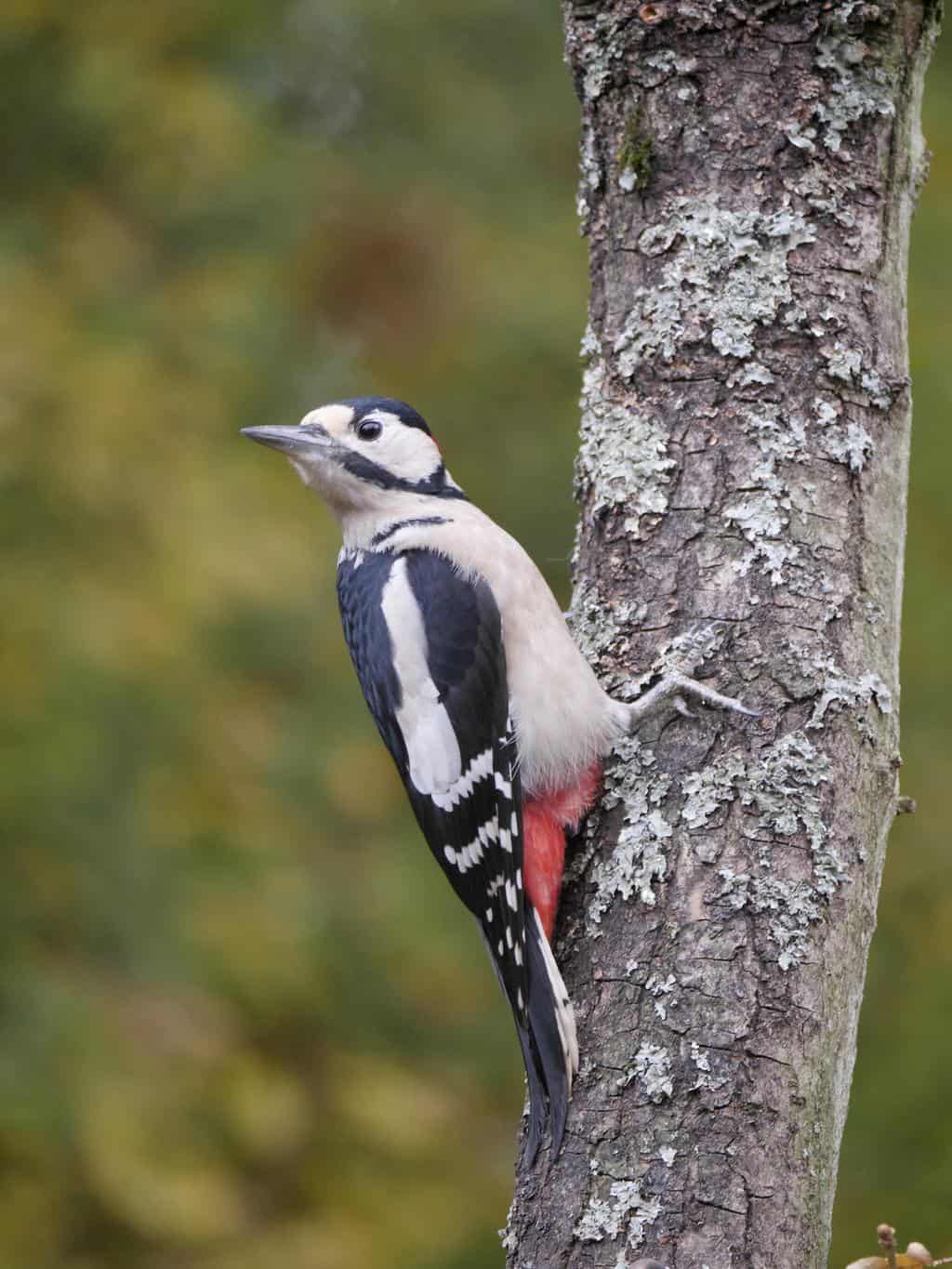
- Scientific Name: Dryobates villosus
- Length: 7.1-10.2 inches
- Weight: 1.4-3.4 ounces
- Wingspan: 13.0-16.1 inches
It isn’t uncommon to mistake the previously mentioned downy woodpecker for another species: the hairy woodpecker. The two are extremely similar in appearance, however, a surefire way to tell them apart is noting that the hairy woodpecker is larger and sports a longer bill.
While these woodpeckers live mostly in mature forests, they can be found in a park or residential area as well.
The hairy woodpecker’s diet consists mainly of insects. You can spot them by surveying large branches of dead trees or listening for their blasting peek calls.
Northern Flicker
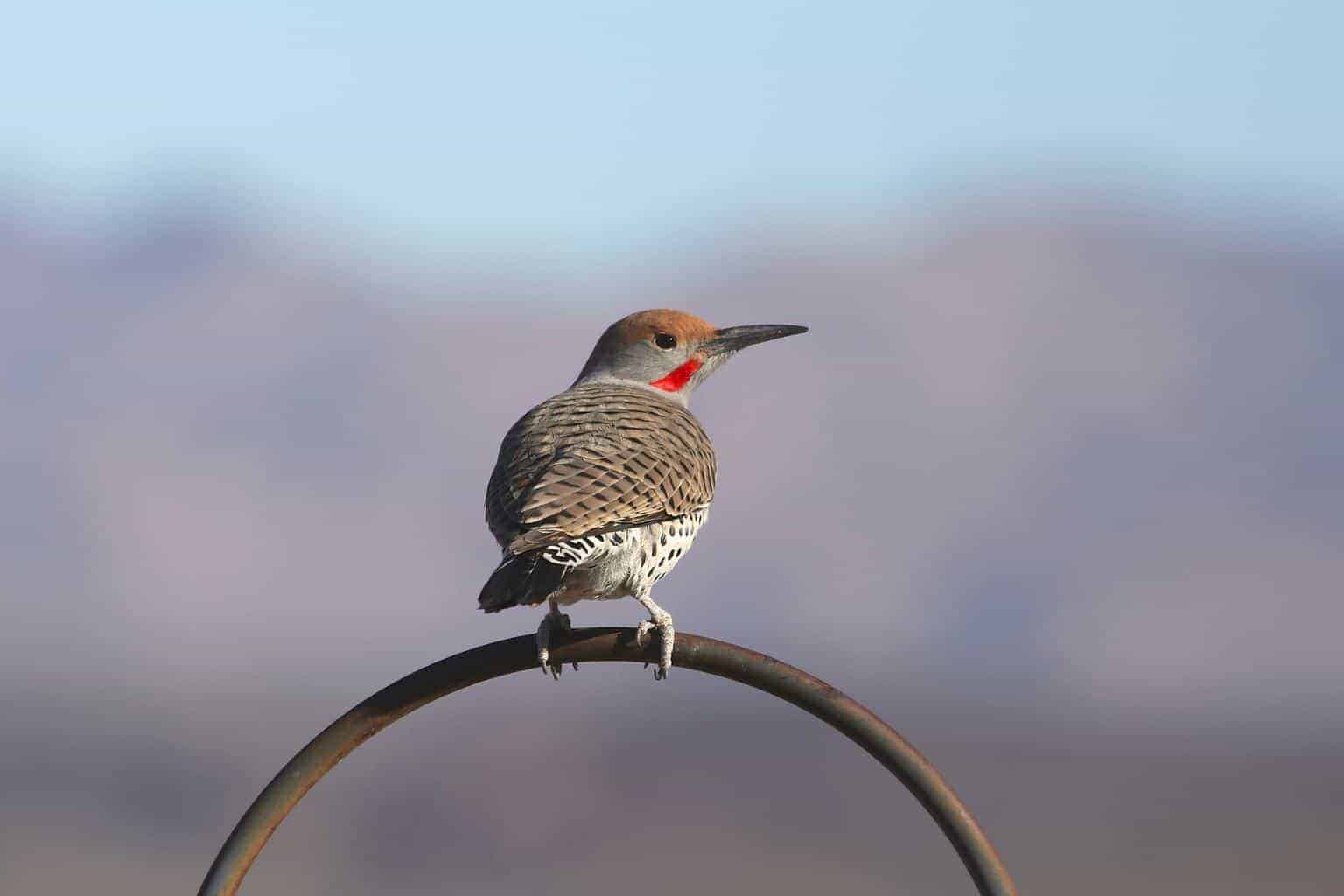
- Scientific Name: Colaptes auratus
- Length: 11.0-12.2 inches
- Weight: 3.9-5.6 ounces
- Wingspan: 16.5-20.1 inches
The distinctive curved bill and beautiful black-scalloped plumage on the brown Northern flicker woodpecker are what make this bird a unique sight.
Northern flickers live in most forest types. You can spot them in parks, open woodlands, and suburbs in New York state all year long. Just follow their noisy ringing calls.
Although they can fly and climb to high elevations, they prefer to gather their food from the ground, relying mostly on ants as food.
American Three-Toed Woodpecker

- Scientific Name: Picoides dorsalis
- Length: 8.3-9.1 inches
- Weight: 1.6-2.4 ounces
- Wingspan: 14.6-15.3 inches
If you find yourself in the northern portions of the state, look out for the American three-toed woodpeckers. These birds are somewhat small with black and white plumage on their bodies, and these opportunistic feeders prefer to live in burned areas and disturbed forests.
American three-toed woodpeckers have a characteristic foraging style. They chip sideways at dead or decaying trees flaking off the bark. Patches of dark outer bark and light inner bark are signs of these woodpeckers’ presence.
Black-Backed Woodpecker

- Scientific Name: Picoides arcticus
- Length: 9.1 in
- Weight: 2.1-3.1 oz
- Wingspan: 15.8-16.5 in
Also known as the Arctic three-toed woodpecker, black-backed woodpeckers have a white stripe on their faces and dark black bodies that blend well with their habitat.
These birds specialize in burnt forests and live off of insects from charred trees. To locate one, look for tree trunks with chipped away patches or listen to their sharp descending chip notes.
These birds are most common to Canada, however, they head south to New York during the winter months to reside in slightly warmer temperatures.
Conclusion
Not only do woodpeckers have admirable sounds but they also help get rid of insect pests. Therefore, homeowners appreciate these beautiful visitors.
Now that you’ve gotten to know woodpeckers and how to identify them in the great state of New York, check out this article to find out how to how to attract these birds to your backyard!




